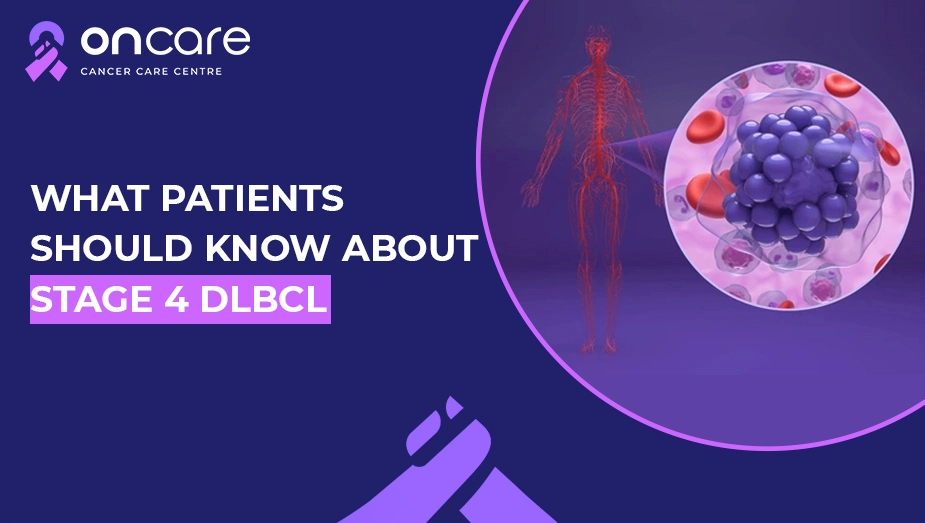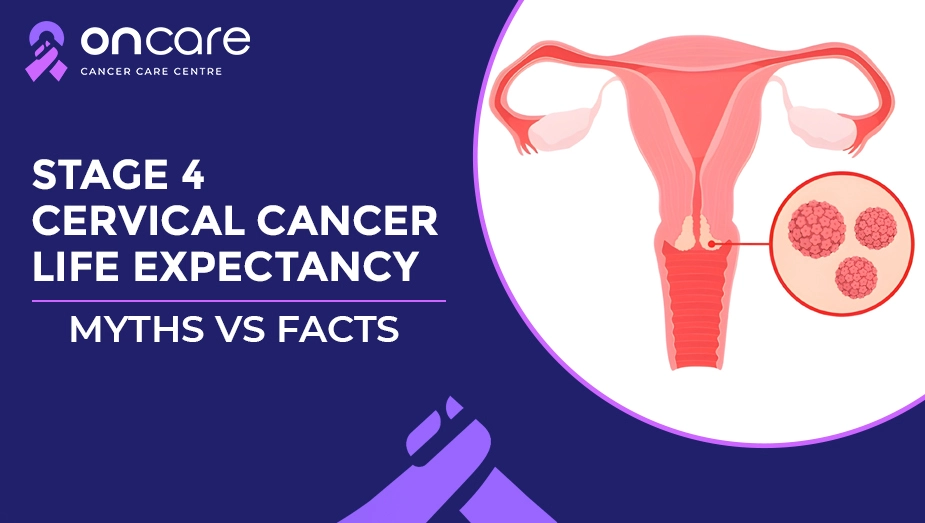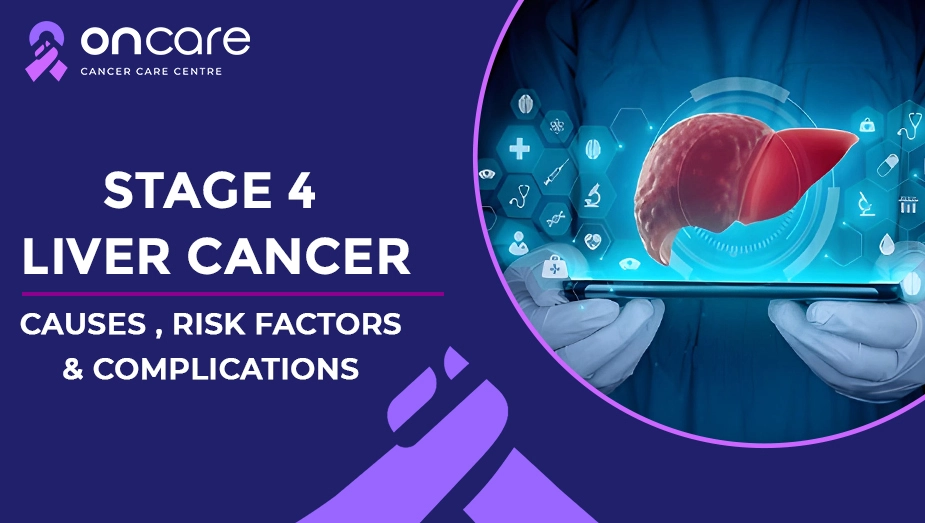Table of Contents
What Patients Should Know About Stage 4 DLBCL

Being diagnosed with stage 4 Diffuse Large B Cell Lymphoma (DLBCL) can feel overwhelming. These are classified as an advanced stage, but do not mean ‘hopeless situation.’ With the right information, an experienced oncology team, and engaged patient care, there’s a reason for hope and meaningful action!
In this blog, we’ll explore more about Stage 4 Diffuse Large B Cell Lymphoma and its treatment modalities, and some key characteristics of this cancer every patient needs to know!
What is Stage 4 DLBCL?
Diffuse large B-cell lymphoma is the most common type of aggressive non-Hodgkin lymphoma, arising from B-cells (white blood cells). In stage 4, in the context of DLBCL, the lymphoma has spread beyond the lymph nodes or typical lymphatic system locations into organs and tissues outside the lymph system.
For example: bone marrow, liver, lungs, kidneys, or central nervous system. Stage 4 indicates a more extensive spread of cancer disease; these often require more intensive health monitoring and treatment, these remain more treatable, and potential treatment outcomes are better than patients expect after the statistical survival rates.
Treatment strategies for Stage 4 DLBCL
Stage 4 of DLBCL means that the cancer is more advanced. The treatments typically tend to be more aggressive and intensive in nature.
Here are some of the treatment regimens used for Stage 4 DLBCL, including:
- Immunochemotherapy: For example, the standard regimen includes R-CHOP (rituximab + cyclophosphamide + doxorubicin + vincristine + prednisone).
- New treatment regimens: In some patients, a modified or intensified combination, including, for example, pola-R-CHP, may be offered.
- Stem cell transplant: Especially in younger or fitter, healthier patients, in certain high-risk cases, or when the lymphoma relapses.
- CNS prophylaxis: In some cases, where there’s a high risk of cancer spread to the brain/spinal fluid, preventive therapy may also be considered in many patients.
- Supportive care: This type of supportive care is often suggested for patients to manage the treatment-related side effects, monitoring of organ function, infection prevention, nutritional support, and psychological support.
What are the key things every patient needs to know?
Understanding these will help you to become an engaged partner in cancer care.
Here are some of the actionable things you need to know. Including:
- Report any types of side effects or new symptoms promptly( including: fever, bleeding, fatigue, neurological changes).
- Maintain good general health: Practice taking nutritious foods, gentle physical activity, sleep and minimizing infections.
- Try to get clarity on supportive therapies: Understand more about growth factor support, infection prophylaxis, nutrition/dietitians, and psychosocial support.
- Ask about clinical trials: In stage 4 cases or relapsed cases of diseases, newer therapies are available for patients.
- Prepare for emotional/mental health: Diagnosing stage 4 DLBCL is a critical moment in any person’s life. If you are feeling exhausted, then try to seek counselling, support groups, and connections with the same cancer support groups.
- Ask about long-term follow-up: Survivors of DLBCL generally need regular monitoring for late effects of treatment. These may include heart toxicity, second cancers, fertility/sexual health, etc.
Practice keeping a written or digital file of your pathology, imaging/scan results, and treatment plans. Also keep a future follow-up schedule, because being informed helps.
Outlook and Prognosis
Stage 4 often indicates more extensive cancer spread, but it does not mean that cure is impossible.
Here are some key numbers and factors, including:
- For stage 4, a five-year relative survival is often quoted around 55% in patients, according to one research source.
- Other research sources suggest that survival rates of these stage cancers can vary widely depending on the risk factors, such as age, organ involvement, LDH levels, subtype, and treatment response.
- Important prognostic factors: Patients above the age of 60, performance status, an increased LDH, more than one extranodal site, molecular subtype (e.g., germinal center vs. activated B-cell), and whether ‘double-triple’ features are present.
Patient Takeaway: While some of these statistics can feel scary, remember that they can vary. An individual treatment outcome might get better or sometimes worse, generally depending on the patient's unique situation. Early detection and timely treatment can improve your treatment outcomes. Consult your doctor about what your risk level is and what you can expect during the treatments.
Is Stage 4 DLBCL always final?
DLBCL is not always terminal. Depending on stage 4, these diseases are often considered potentially curable and highly treatable. While even at stage 4, remission, a decrease or absence of clinical cancer signs, is generally possible with treatment.
Consult Today
Being diagnosed with stage 4 DLBCL is unquestionably challenging, but it's a challenge with many treatment options! The modern cancer treatments have significantly improved the treatment outcomes for many patients with DLBCL, including those with advanced-stage disease. If you or any loved ones of yours are facing this health condition, you are not alone in this—many people have walked this path and achieved remission and beyond!
At Oncare, we offer premium-quality cancer treatments, including advanced cancer surgeries at an affordable price range with an experienced cancer specialist consultation.
If you or any loved ones of yours are diagnosed with Oncare Cancer Center and book an appointment with our experienced cancer specialist today! Get an estimated cost of your cancer treatments today!
Frequently Asked Questions
DLBCL is not always terminal, while depending on the stage, it is considered potentially curable and highly treatable. Even at stage 4, many studies have claimed that a decrease or absence of clinical cancer sign is possible with treatment.
Here are some of the types of DLBCL by the cell of origin (COO), including:
- Germinal Center B-cell like-(GCB)
- Activated B- cell like - (ABC)
Examples of genetic subtypes of DLBCL include:
- Double-hit lymphoma (DHL)
- Triple - hit lymphoma (THL)
Examples of DLBCL subtypes classified by location in the body include:
- Primary central nervous system: Located in the brain, spinal cord
- Primary cutaneous BLBCL, leg type: These types affects the skin, primarily on the legs
Many studies claims that Stage 4 Diffuse Large B Cell is primarily treated with Chemoimmunotherapy, most commonly given with six cycles of R-CHOP, (rituximab, cyclophosphamide, doxorubicin, vincristine, and prednisone) or the newer Pola- R-cCHP regimen.
Book an Appointment
Related Blogs

Stage 4 Breast Cancer Survival Rate: What Patients Need to Know
Explore more about the Stage 4 breast cancer survival rate, the life expectancy of this cancer, factors affecting the survival, and tips for Stage 4 cancer patients!

Stage 4 Cervical Cancer Life Expectancy: Myths vs Facts
Explore more about stage 4 cervical cancer and life expectancy, and myths and facts about stage 4 cervical cancer and what are the complications of this cancer!

Stage 4 Liver Cancer: Causes, Risk Factors, and Complications
Explore more about Stage 4 Liver Cancer and how it develops and its causes, risk factors and health complications and how healthcare providers treat stage 4 liver cancer!

Stage 4 Cancer Survivors: Inspirational Stories of Second Chances
Read inspirational stories of stage 4 cancer survivors who fought bravely. Learn how hope, treatment, and resilience gave them a second chance at life.

